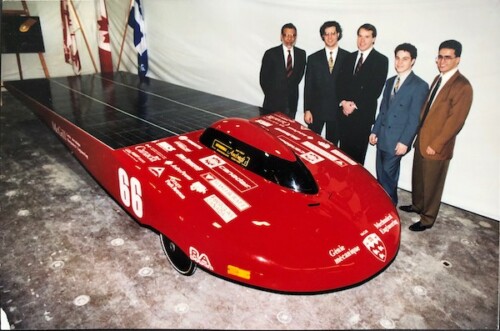
1980
McGill alumnus Val Fitch, BEng(Elec)’48, DSc’87, wins the Nobel Prize in Physics for the discovery of violations of fundamental symmetry principles in the decay of neutral K-mesons. The prize is shared with his colleague, James Cronin.
1981
Under the leadership of Director David Farley, BArch’59, the School of Urban Planning officially becomes a separate unit. Since moving to the Faculty from Graduate Studies in 1976, the School had been listed separately in the course calendar. The School is recognized by the Ordre des Urbanistes du Québec and the Canadian Institute of Planners.
Mechanical Engineering adds the Aeronautical Engineering Option.
Engineering alumni demonstrate through their generosity the quality and value of McGill Engineering teaching. First, the Class of 1938 creates and sponsors a Teaching Award until 1985. This award was taken over by the Class of 1951 until 1994, when it became known as the Alumni Award for Outstanding Teaching. That same year, the Class of 1994 endowed its own award which remains known as the Class of 1994 Outstanding Teaching Award.
1983
The Engineering Library moves from the Macdonald Engineering Building to the renovated Macdonald Stewart Building where it is merged with the Physical Sciences Library, today known as the Schulich Library of Science and Engineering.
1984
Canada’s foremost chemical engineer, William H. Gauvin of Chemical Engineering, wins the Jules Stachiewicz Medal. The previous year he had been honoured by McGill with a DSc honoris causa.
The Faculty introduces its new MEng Program in Pulp and Paper.
1985
With a grant from the Québec Ministère de l’Enseignement Supérieur et de la Science, four researchers – Martin Levin, Steve Zucker, Pierre Bélanger, and George Zames, BEng’54 – form the McGill Research Centre for Intelligent Machines (McRCIM), now known as the Centre for Intelligent Machines (CIM). The Center seeks to enhance research in artificial intelligence, computer vision, systems and control and robotics, and has members across the Faculty of Engineering, Science, and Medicine. Prof. Martine Levine is appointed as Director.
The Macdonald-Harrington Building, constructed in 1898, is renovated at a cost of $4.5 million.
The construction of the 8th floor addition to the McConnell Engineering Building is approved at a cost of $170,000.
The Department of Chemical Engineering and the Faculty of Science’s Biology Department introduce a biotechnology minor. Chemical Engineering also establishes a new enrolment record that year with 68 students at the undergraduate level and 23 at the master’s level. The latter is the first group to graduate from the MEng (non-thesis) program.
In honour of her late brother George G. Ulmer Jr., BSc’17, Eugenie Ulmer Lamothe of Minneapolis, Minnesota, creates a memorial fund in his name. The remainder of the gift stipulates that all funds be used to benefit Chemical Engineering and is designated in her name.
1986
The Faculty makes a major modification to the complementary studies requirement for all the BEng programs; study of the impact of technology on society becomes mandatory.
1987
Alberto Perez-Gomez is appointed to hold the newly created Saidye Rosner Bronfman Chair in Architectural History. He institutes a new graduate program, History and Theory of Architecture.
Canadian Mining Hall of Fame inductee and McGill honorary degree recipient Gerald G. Hatch, BEng (Metallurgy) ’94, DS’90, endows a Chair bearing his name in Mining and Metallurgy. Hatch retired in 1990 but not before the small consulting firm he started with six employees in 1958 won the Governor General’s Award for Excellence for implementing the process of direct reduced iron as a feedstock for electric furnace steelmaking. John Gruzleski is named the inaugural chairholder.
The School of Architecture moves into the renovated Macdonald-Harrington Building.
Three floors of the McConnell Engineering Building are renovated.
1988
Three research centres with active participation by Chemical Engineering staff are established: Polymer McGill, Pulp and Paper Research Centre, and Centre for Bioprocess Engineering.
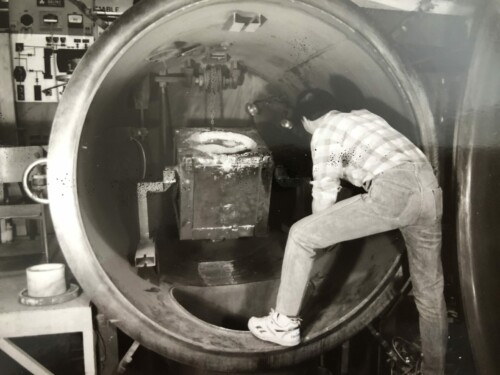
McGill and École Polytechnique create a joint Mining Co-op BEng program, which ranks among the largest mining programs in Canada.
The Vectra Lab [now known as the Engineering Microcomputing Facilities (EMF)] in the Macdonald-Harrington Building is renamed in memory of the late Dean d’Ombrain and his role in introducing computers to McGill and the Faculty. An undergraduate lab, it is equipped with microcomputers from Hewlett Packard (the Vectras) that are networked and have hard-disk file servers and laser printers. The lab has a seating capacity of 68.
McCAD, an advanced Hewlett Packard based computer lab, opens for graduate students.
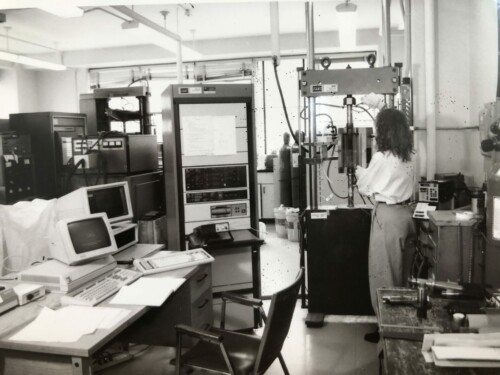
1989
Witold Rybczynski, BArch’66, MArch’72, DSc’02, and Avi Friedman, MArch’83, reorganize the School of Architecture’s Housing Design graduate program and rename it the Affordable Homes Program.
The Faculty introduces a new BEng program in Computer Engineering. It also introduces a new, modified BEng program in Civil Engineering with a core course in Environmental Engineering; a Minor in Materials Engineering offered jointly by Chemical and Metallurgical; a Minor in Construction Engineering and Management in Civil.
The Inter-University Plasma Technology Research Centre is established jointly with the Université de Sherbrooke and the Hydro-Québec Research Institute. Plasma Technology has great potential in the areas of material treatment, chemical synthesis, extractive metallurgy and toxic waste destruction.
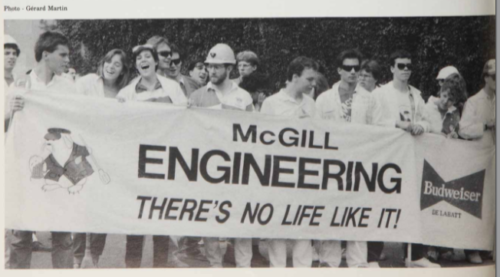
1990
In collaboration with local aerospace companies, École Polytechnique and Concordia University, the Faculty introduces a joint master’s program in Aerospace Engineering. Also new is a BSc Major in Computer Science (in the Faculty of Science); a Minor in Arts and a Minor in Environmental Engineering. Chemical introduces a new BEng called Program for the 21st Century, or Curriculum 2000.
Following the tragic shooting of 14 women at the École Polytechnique a year earlier, student group POWE (Promoting Opportunities for Women Engineering) is launched. It aims to encourage female participation in the field of Engineering, and to provide support and mentorship.
The McGill Metals Processing Centre (MMPC) is launched. Its mission is to operate as an internationally recognized research centre for studies in the processing and production of advanced metallurgical materials. Founding member, Prof. Roderick Guthrie, becomes Director, and Prof. John Jonas is nominated Co-Director.
The Engineering Undergraduate Society (EUS) becomes incorporated.
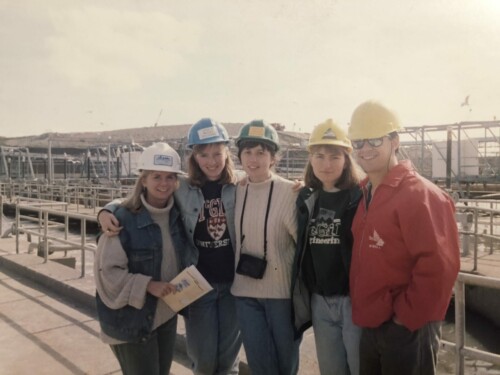
1991
A group of retired engineers join students to launch the McGill Engineering Summer Employment Program (MESEP) to help students find career-related summer jobs.
1992
The IYES (Internship Year for Engineering and Science) program begins. Students receive academic credit for 8, 12 or 16 months as interns in industry.
1993
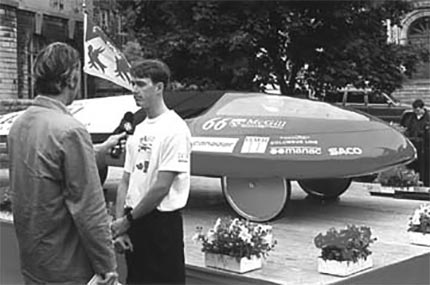
A group of ten students in the Department of Mechanical Engineering design Quebec’s first solar car. They call it Ra Power in honour of the Egyptian sun god. At SunRayce ’93, Ra Power finishes 11th overall, the highest of any Canadian entry.
1996
Engineering’s Prof. Vince Thomson and the Faculty of Management’s Prof. Vedat Verter co-direct the newly established Master of Manufacturing Management Program. Thomson was appointed the inaugural Werner Graupe Professor of Manufacturing Automation two years prior.
Quebec’s Ministère de l’Éducation approves McGill’s application to offer a PhD program in Architecture.
1997
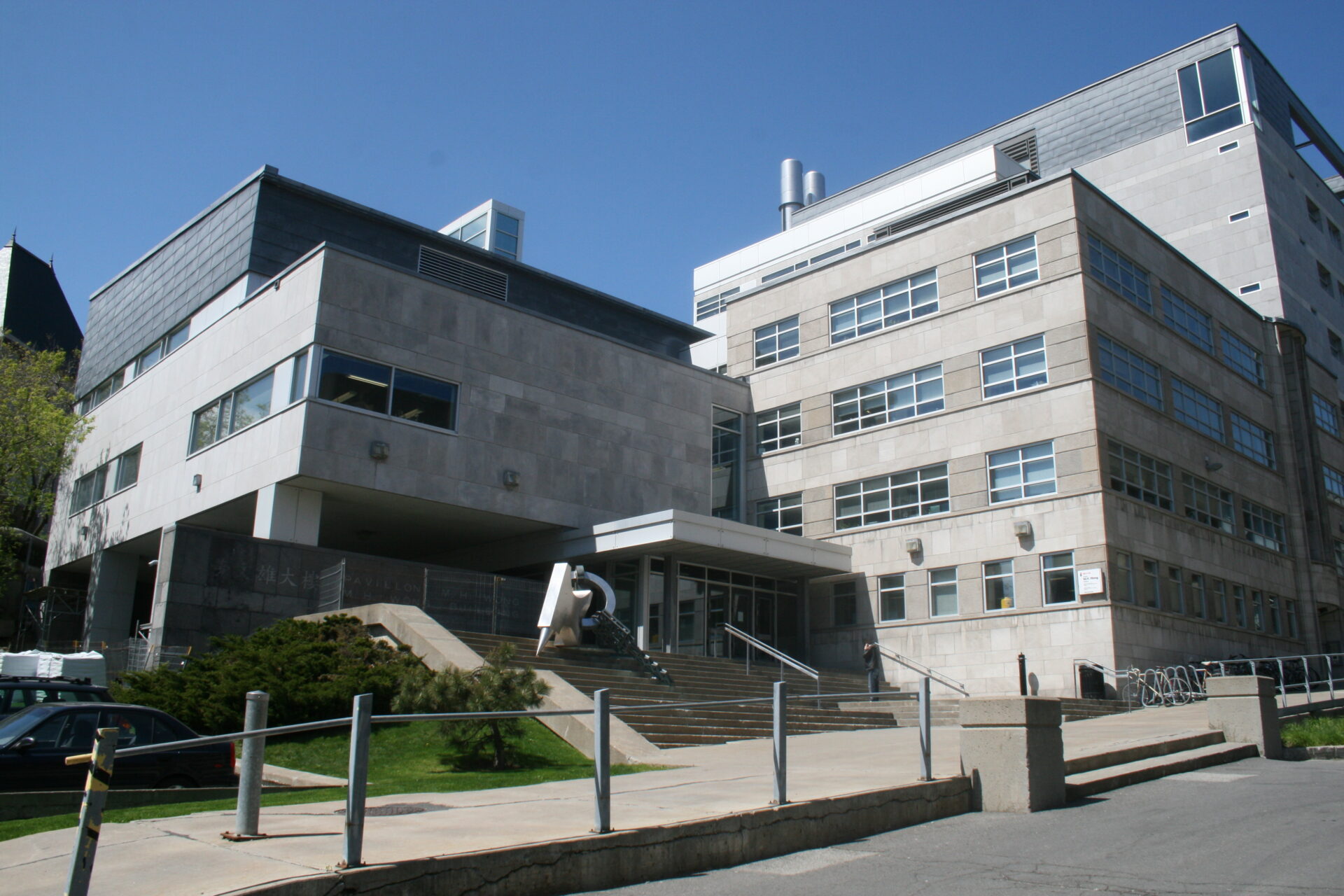
The new M.H. Wong Building – the first new major academic construction on McGill’s downtown campus in almost 20 years – is erected around the Foster Radiation Laboratory (built in 1948). The building, which became the new home of the Departments of Chemical Engineering and Mining, Metals, and Materials Engineering, cost close to $34 million, $12 million of which came from private donations. The largest of these was a gift of $8 million from the family and friends of the late Man Hung (Jimmy) Wong, BArch 1981. Another anonymous donor from Hong Kong contributed $1.9 million in honour of the late Chemical Engineering professor, J.B. Philips.
The Faculty creates an interdepartmental MEng in Environmental Engineering. Van Nguyen of Civil Engineering is the inaugural program coordinator.
1998
The McGill Engineering Career Centre (MECC) is created, merging the career services offered by IYES, CAPS (Career and Placement Services) and MESEP.
The Department of Electrical Engineering changes its name to the Department of Electrical and Computer Engineering (ECE). David Lowther is named Chair of the Department that attracted 52 percent of all applications to the Faculty that year.
Faculty students and staff write and adopt a code of conduct called “The Blueprint” to better foster a sense of community and improve the Engineering environment.
1999
The Brace Research Institute merged with the Centre for Drainage and Water Management of the Faculty of Agricultural and Environment Sciences to form the Brace Centre for Water Resources Management. The Centre is jointly administered by Engineering and Agricultural and Environmental Sciences.
Jeremy Cooperstock, of the Department of Electrical and Computer Engineering and member of the Centre for Intelligent Machines, inaugurates the McGill Intelligent Classroom, a highly sophisticated electronic classroom, located in Room 13 of the McConnell Engineering Building.
